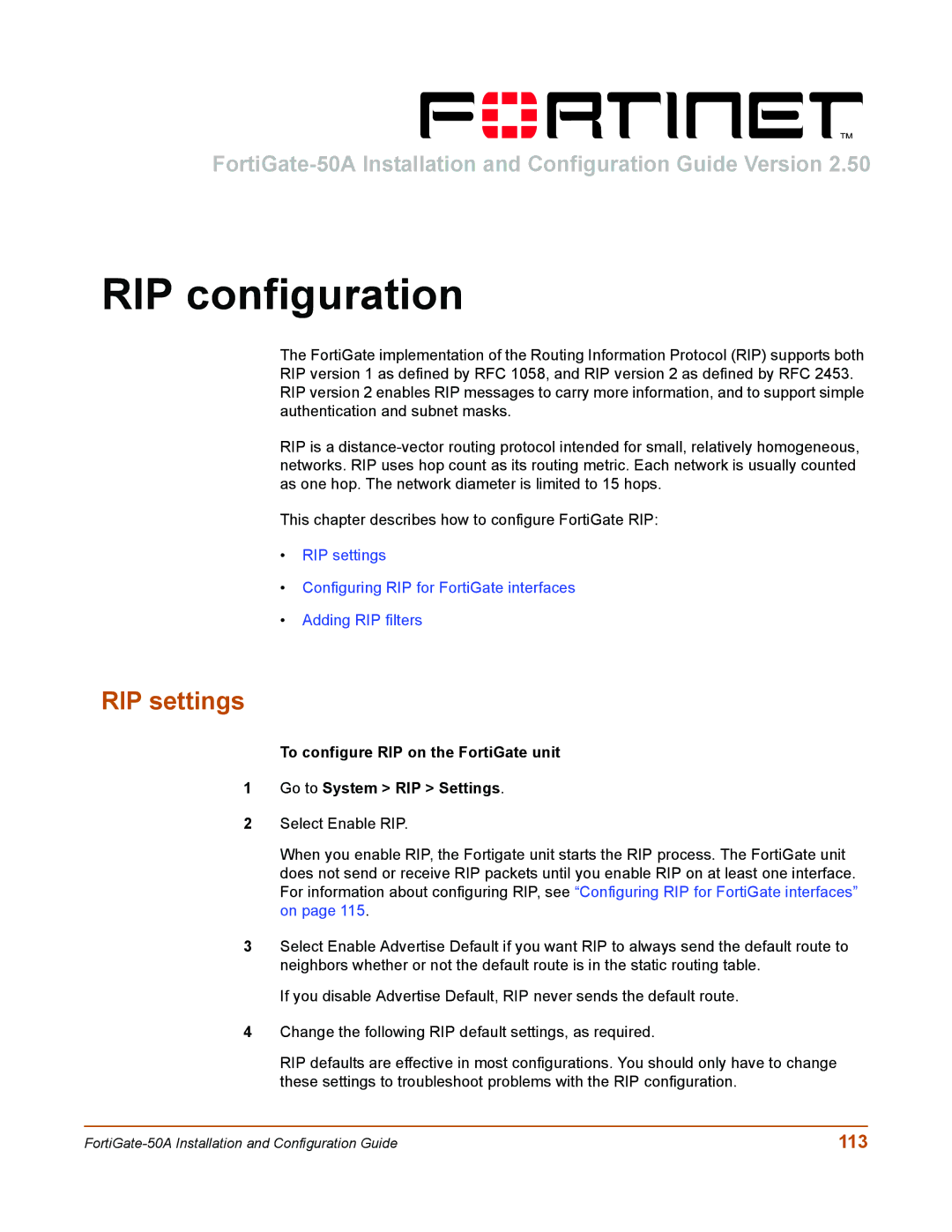
RIP configuration
The FortiGate implementation of the Routing Information Protocol (RIP) supports both RIP version 1 as defined by RFC 1058, and RIP version 2 as defined by RFC 2453. RIP version 2 enables RIP messages to carry more information, and to support simple authentication and subnet masks.
RIP is a
This chapter describes how to configure FortiGate RIP:
•RIP settings
•Configuring RIP for FortiGate interfaces
•Adding RIP filters
RIP settings
To configure RIP on the FortiGate unit
1Go to System > RIP > Settings.
2Select Enable RIP.
When you enable RIP, the Fortigate unit starts the RIP process. The FortiGate unit does not send or receive RIP packets until you enable RIP on at least one interface. For information about configuring RIP, see “Configuring RIP for FortiGate interfaces” on page 115.
3Select Enable Advertise Default if you want RIP to always send the default route to neighbors whether or not the default route is in the static routing table.
If you disable Advertise Default, RIP never sends the default route.
4Change the following RIP default settings, as required.
RIP defaults are effective in most configurations. You should only have to change these settings to troubleshoot problems with the RIP configuration.
113 |
